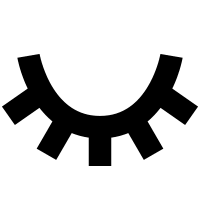Statusdar: A Graphical Control Element for Displaying the Current State of Your Window
- wilmentfingpitacon
- Aug 2, 2023
- 4 min read
What is Statusdar and How to Use It?
If you are developing a mobile app, you might have noticed that the status bar is one of the most important elements of the user interface. The status bar is the zone, typically at the top of the screen, that displays the current time, Wi-Fi and cellular network information, battery level and/or other status icons. It can also show notifications, messages, progress indicators, and other useful information. The status bar can affect the look and feel of your app, as well as the user experience and satisfaction.
statusdar
However, creating a custom status bar for your app can be challenging, especially if you want to support different platforms, devices, orientations, and themes. You might have to deal with complex code, compatibility issues, design constraints, and performance problems. That's why you need a tool that can help you create a beautiful and functional status bar for your app with ease. That's why you need Statusdar.
Features of Statusdar
Statusdar is a React Native component that allows you to control the app's status bar. It lets you customize the background color, text color, visibility, animation, and more. You can also use it to display different status bars for different screens or scenarios in your app. Here are some of the features that make Statusdar stand out:
Customizable status bar for any app
With Statusdar, you can create a status bar that matches your app's style and theme. You can choose from different colors, styles, and effects. You can also hide or show the status bar depending on your needs. For example, you can hide the status bar when displaying a full-screen video or image, or show it when displaying a web page or a form. You can also change the status bar dynamically based on the app's state or user's actions.
statusdar react native
statusdar status bar
statusdar web browser
statusdar file manager
statusdar graphics editor
statusdar word processor
statusdar app development
statusdar UI design
statusdar information display
statusdar window bottom
statusdar control element
statusdar current state
statusdar extra functionality
statusdar clickable sections
statusdar text-based applications
statusdar console-based applications
statusdar 80x25 text mode
statusdar keyboard shortcuts
statusdar video game HUD
statusdar player's vital information
statusbar usage examples
statusbar advantages and disadvantages
statusbar pop-up messages
statusbar predefined area
statusbar advisory messages
statusbar one-line display
statusbar multi-line display
statusbar parent window
statusbar edge of the display
statusbar dialog box
react native statusbar component
react native statusbar props
react native statusbar animated prop
react native statusbar backgroundColor prop
react native statusbar barStyle prop
react native statusbar hidden prop
react native statusbar networkActivityIndicatorVisible prop
react native statusbar showHideTransition prop
react native statusbar translucent prop
react native statusbar methods
react native statusbar popStackEntry method
react native statusbar pushStackEntry method
react native statusbar replaceStackEntry method
react native statusbar setBackgroundColor method
react native statusbar setBarStyle method
Easy to integrate with React Native
Statusdar is designed to work seamlessly with React Native, the popular framework for building native mobile apps using JavaScript and React. You can use Statusdar as a component in your React Native app, just like any other component. You can also use it with other React Native libraries and components, such as navigation, routing, UI kits, etc. Statusdar follows the React Native conventions and best practices, so you don't have to worry about learning a new syntax or API.
Supports different platforms and devices
Statusdar supports both iOS and Android platforms, as well as different devices and screen sizes. It also adapts to different orientations and modes, such as portrait, landscape, dark mode, etc. You don't have to write separate code for each platform or device. You can use the same code for all of them. Statusdar handles all the differences and nuances for you.
How to Install and Use Statusdar
If you are interested in using Statusdar for your app, here are the steps to follow:
Installation steps
To install Statusdar, you need to have React Native installed on your system. You can follow the official React Native documentation for getting started. Then, you can use npm or yarn to install Statusdar as a dependency in your project:
npm install --save statusbar
or yarn add statusbar
Usage examples
To use Statusdar in your app, use are: - backgroundColor: The background color of the status bar. You can use any valid color value, such as hex, rgb, rgba, etc. - barStyle: The style of the status bar content. You can use one of the following values: "default", "light-content", or "dark-content". - hidden: A boolean value that determines whether the status bar is hidden or visible. You can use true or false. - animated: A boolean value that determines whether the status bar changes are animated or not. You can use true or false. - animationType: The type of animation used for the status bar changes. You can use one of the following values: "none", "fade", or "slide". - translucent: A boolean value that determines whether the status bar is translucent or not. You can use true or false. For more props and options, you can check the documentation on the Statusdar website.
Where can I find more information about Statusdar?
You can find more information about Statusdar on the Statusdar website, which is There, you can find the documentation, examples, demos, and contact information. You can also visit the GitHub repository of Statusdar, which is There, you can find the source code, issues, pull requests, and contributions. 44f88ac181

Comments